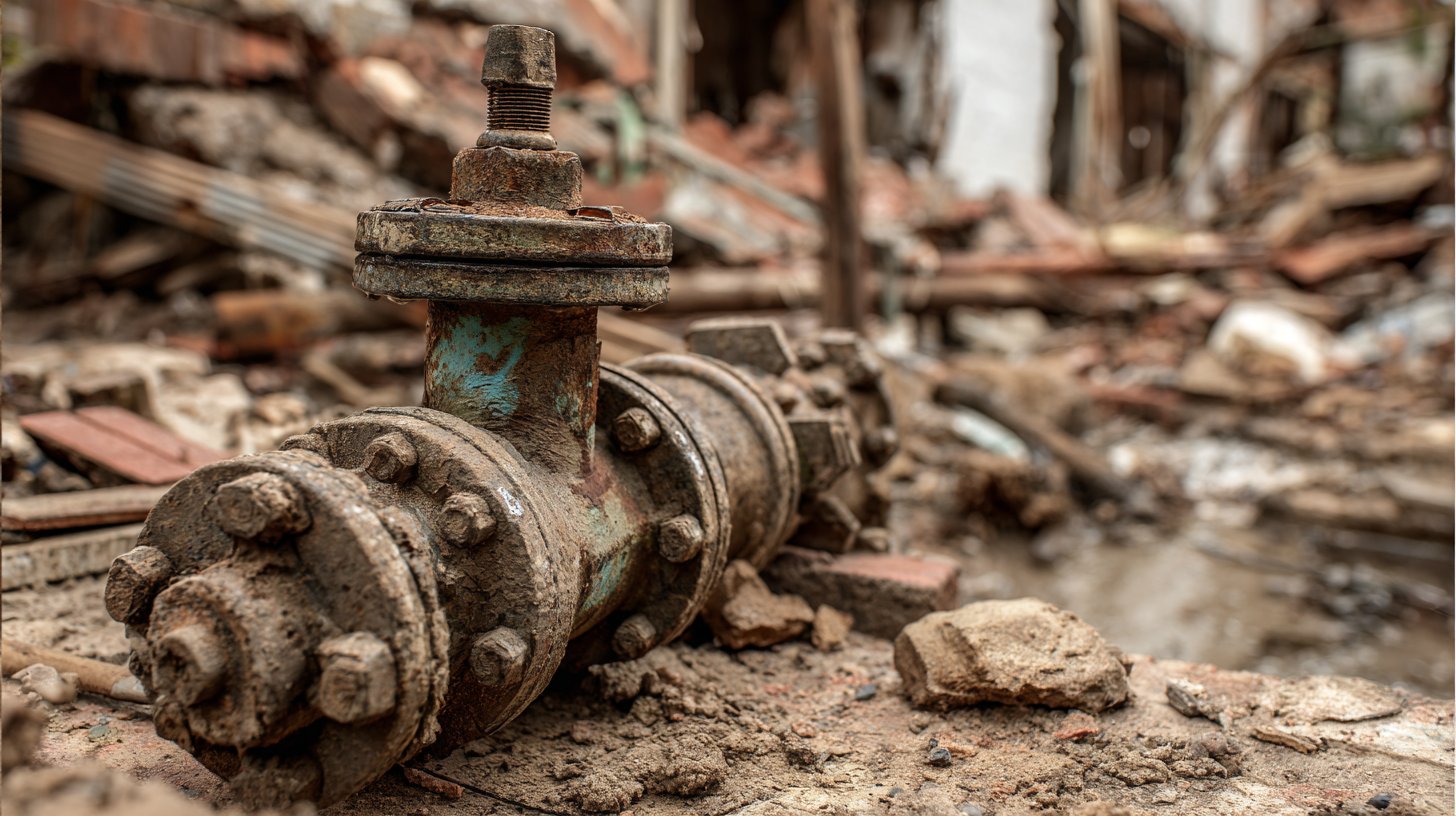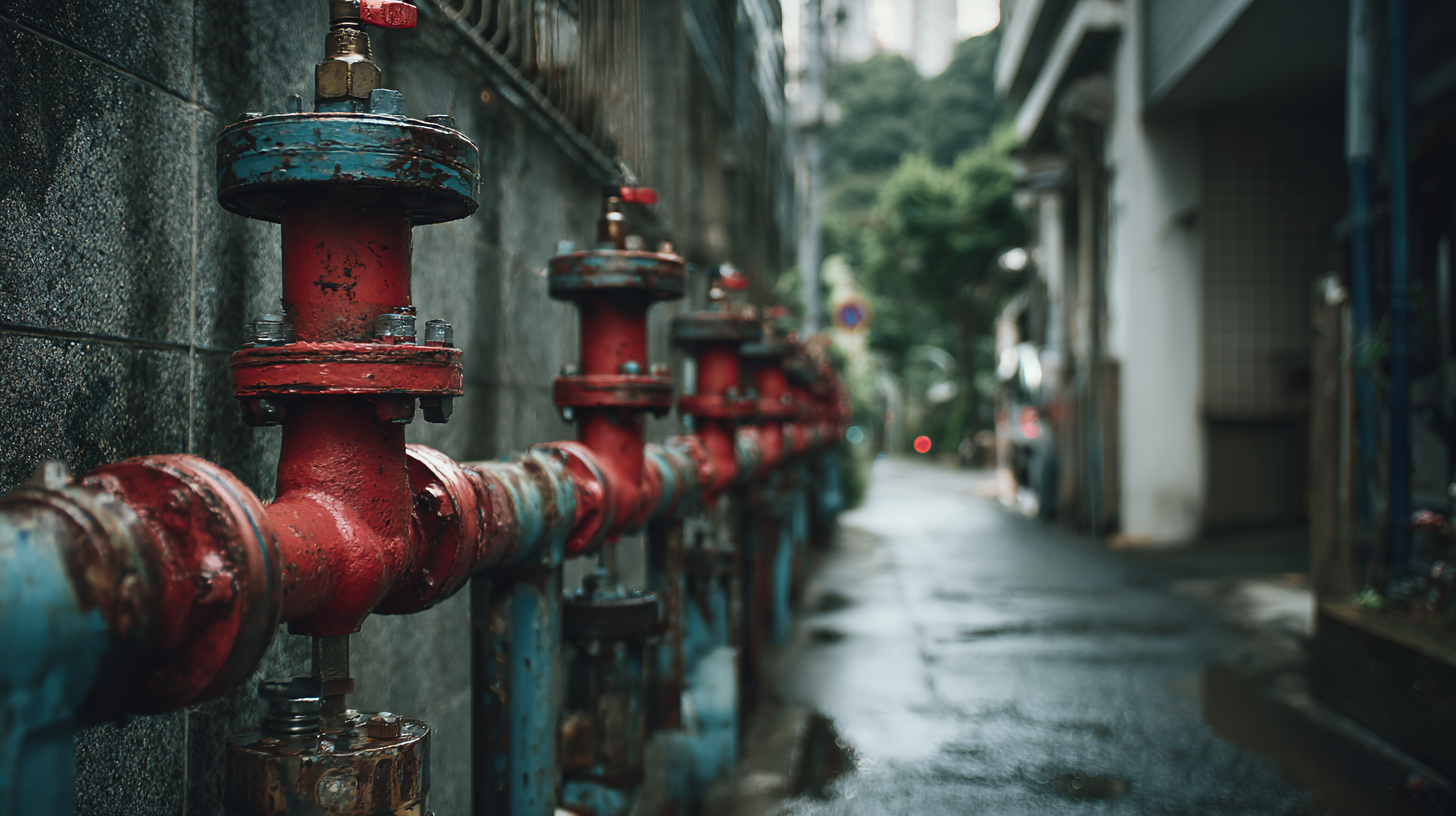

In seismic zones, the impact of earthquakes can lead to devastating property damage, with estimates suggesting that up to 60% of the destruction is due to secondary incidents such as fires caused by ruptured gas lines. A pivotal solution to mitigate these risks is the implementation of earthquake shut off valves. According to a report by the National Earthquake Safety Foundation, installing earthquake shut off valves can reduce property damage by as much as 50%. These devices automatically cease gas flow in the event of an earthquake, significantly lowering the likelihood of fires and subsequent destruction. As urban areas become increasingly prone to seismic activity, adopting preventative measures like earthquake shut off valves becomes essential for safeguarding lives and properties, representing a crucial investment for homeowners and businesses alike.

 Earthquake shut off valves play a crucial role in minimizing property damage during seismic events. These mechanically activated devices are designed to automatically shut off gas and water supplies when they detect vibrations indicative of an earthquake. The mechanism relies on a weighted system that responds to the shaking, ensuring that utilities are immediately halted to prevent fires, flooding, or further structural damage. By stopping the flow of potentially hazardous materials, these valves provide essential safety during the critical moments following an earthquake.
Earthquake shut off valves play a crucial role in minimizing property damage during seismic events. These mechanically activated devices are designed to automatically shut off gas and water supplies when they detect vibrations indicative of an earthquake. The mechanism relies on a weighted system that responds to the shaking, ensuring that utilities are immediately halted to prevent fires, flooding, or further structural damage. By stopping the flow of potentially hazardous materials, these valves provide essential safety during the critical moments following an earthquake.
In seismic zones, the implementation of earthquake shut off valves can reduce property damage by up to 50%. This significant reduction is largely due to the prevention of secondary disasters, such as explosions or chemical leaks that can occur when utility lines are compromised. As buildings sway and settle, the risk of breaking gas lines increases, making the valves an indispensable feature in earthquake-prone areas. Understanding the mechanics behind these valves not only highlights their importance but also encourages homeowners and builders to prioritize their installation, thus fostering a culture of safety and preparedness in vulnerable regions.
In regions prone to seismic activity, identifying high-risk areas is crucial for minimizing property damage during earthquakes. Geological surveys and historical seismic data play significant roles in pinpointing these zones. Areas with a history of intense earthquakes, particularly those near fault lines or with soft soil composition, are candidates for the installation of shut-off valves. By focusing resources on these high-risk locales, property owners can significantly enhance their safety measures, protecting both lives and property.

The strategic planning around when to install shut-off valves also factors into overall safety during seismic events. Ideally, these valves should be integrated into both new constructions and retrofitting plans for older buildings in vulnerable zones. Prompt installations before anticipated seismic activities can serve as a proactive measure against catastrophic damage, allowing for immediate quick shut-off of gas or water lines should an earthquake arise. This preventative approach not only protects infrastructure but also aids in expediting the recovery process, reducing downtime for businesses and residents alike.
Installing earthquake shut off valves is a crucial step in safeguarding properties situated in seismic zones. These valves play a vital role in minimizing property damage by automatically shutting off the gas supply during an earthquake, reducing the risk of fires and explosions. The installation process begins with selecting the appropriate valve based on the specific gas system and region's seismic intensity. It is essential to consult local codes and regulations to ensure compliance and effectiveness.
Once the right valve is chosen, the installation can proceed with the following steps. First, shut off the gas supply at the main line to ensure safety. Next, carefully remove the existing manual shut off valve, taking care to note the orientation and connections. Install the earthquake shut off valve according to the manufacturer’s instructions, ensuring all fittings are secure and leak-free. Finally, restore the gas supply and conduct a pressure test to confirm that there are no leaks, completing the installation process. Regular inspections should follow to maintain the system’s integrity and performance, providing long-term protection for the property against earthquake-related hazards.
This chart illustrates the percentage reduction in property damage when earthquake shut off valves are installed in seismic zones, compared to properties without them.
To ensure that shut-off valves function effectively during an earthquake, regular maintenance is essential. First, property owners should inspect their valves at least once a year to check for leaks, corrosion, or any signs of wear and tear. It’s also crucial to test the operation of the valves by turning them on and off to confirm they are functioning smoothly. This routine check can prevent unexpected failures during a seismic event.
In addition to regular inspections, homeowners should familiarize themselves with the location and operation of their shut-off valves. This knowledge enables quick action in an emergency, reducing the risk of extensive property damage. Furthermore, securing the valves with proper mounting can prevent them from being dislodged during tremors. Keeping the area around the valves clean and easily accessible will also ensure that, if necessary, they can be quickly shut off to mitigate the impact of gas or water leaks. By following these maintenance tips, homeowners can significantly enhance the resilience of their properties in seismic zones.
The installation of earthquake shut-off valves in properties located in seismic zones presents a significant opportunity to mitigate property damage and protect investments. These automatic valves, which activate during seismic events, can cut property damage by as much as 50%. In evaluating their cost-benefit ratio, it's essential to consider both direct and indirect financial implications. The initial costs of purchasing and installing these valves can be offset by the savings from reduced repairs and lower insurance premiums post-installation.
Moreover, the adoption of shut-off valves enhances overall safety for residents and minimizes the risk of secondary disasters, such as fires caused by ruptured gas lines following an earthquake. Property managers must assess the long-term benefits of these systems against the upfront costs. Ultimately, investing in shut-off valves not only safeguards physical assets but also fosters a sense of security among tenants. As the frequency of seismic events increases, the proactive implementation of such measures may become essential in maintaining property value and continuity in real estate investments.
| Property Type | Installation Cost (USD) | Estimated Damage without Shut Off Valves (USD) | Estimated Damage with Shut Off Valves (USD) | Damage Reduction (%) | Cost-Benefit Ratio |
|---|---|---|---|---|---|
| Single-Family Home | 2,000 | 100,000 | 50,000 | 50% | 50:1 |
| Apartment Complex | 5,000 | 500,000 | 250,000 | 50% | 100:1 |
| Commercial Building | 10,000 | 1,000,000 | 600,000 | 40% | 60:1 |
| Industrial Facility | 15,000 | 2,000,000 | 1,200,000 | 40% | 133.33:1 |
© Copyright 2025 | LittleFirefighter.com | All Rights Reserved | 1EZ Creative: Orange County Web Design
Fusce ut ipsum tincidunt, porta nisl sollicitudin, vulputate nunc. Cras commodo leo ac nunc convallis ets efficitur.

12345 North Main Street,
New York, NY 555555
1.800.555.6789
sale@vibrotools.com
